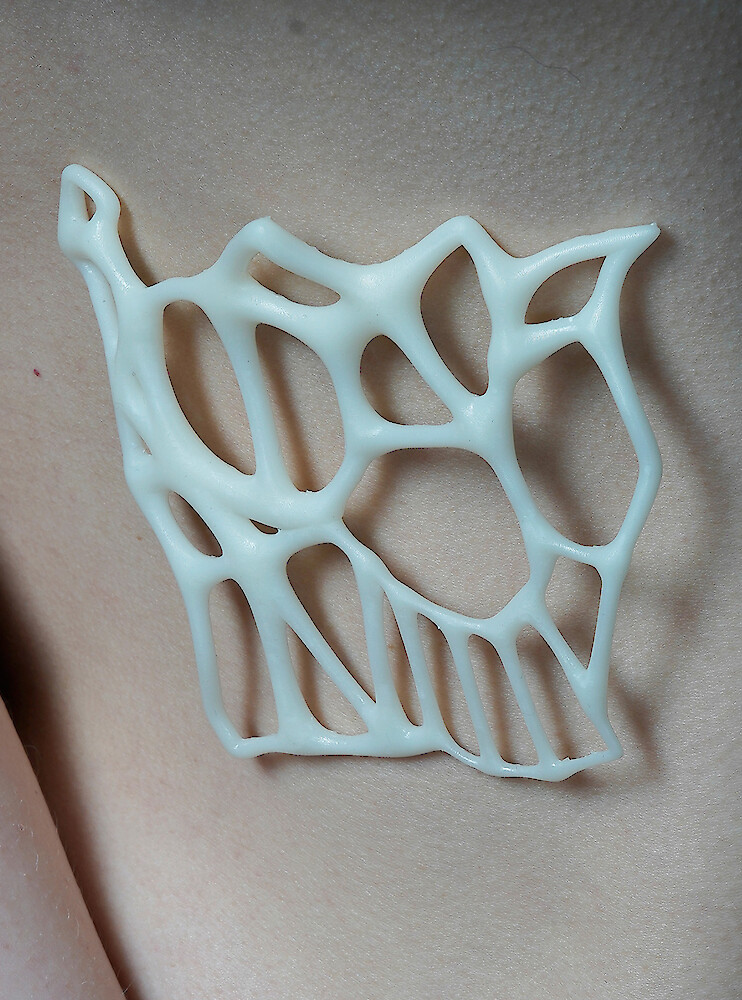
Design for Interaction and Inquiry
[DE]
Design ermöglicht, sich kritisch mit den Komplexitäten unserer Welt auseinanderzusetzen und in diese gestaltend einzugreifen. Das Lehrgebiet "Design for Interaction & Inquiry" versteht Design als gesellschaftliche Aktivität, anhand derer verhandelt werden kann, in welcher Welt wir heute und in Zukunft leben möchten. Auch das Design an sich, als Disziplin und Praxis, wird dabei hinterfragt und bietet einen Ort für gestalterische Interventionen. Ein methodisches Augenmerk der Arbeit des Lehrgebiets liegt in der Gestaltung von Interaktionen und designforscherischen Prozessen. Ausgehend von Theorien des kritischen Posthumanismus sind thematische Schwerpunkte das Verschmelzen digitaler und biologischer Systeme (wie z.B. in der künstlichen Intelligenz sowie synthetischen Biologie), Post-Anthropozentrismus und das Schaffen neuer Denk- und Handlungsweisen in den Verflechtungen zwischen Mensch, Umwelt, Technologie und Ökonomie.
[ENG]
Design enables a critical engagement with the complexities of our world and to intervene in it in a formative way. The "Design for Interaction & Inquiry" studio understands design as a social activity that can be used to negotiate which world we want to live in, today and in the future. Design itself, as a discipline and practice, is investigated and opened up as a space for design interventions. A methodological focus of the studio’s work lies in the design of interactions and design research processes. Based on theories of critical posthumanism, thematic foci are the merging of the digital and the biological (e.g. in artificial intelligence and synthetic biology), post-anthropocentrism, and developing new ways of thinking and acting within entanglements between humans, the environment, technology, and the economy.
Image above: Site for beta-carotene harvesting from algae at Hutt Lagoon, Western Australia
Team
Prof. Dr. Johanna Schmeer
Design for Interaction and Inquiry
Tom Baffi
Wissenschaftlicher Mitarbeiter
Forschung

Book: Xenodesign – Towards Transversal Engagement in Design
In a time when the anthropocentrism of Western thinking and acting is under increased scrutiny for its role in the ecological and social crises of our time, new imaginaries and design approaches that question human-centrism, and open up paths towards alternatives, are needed. As a design field concerned with challenging the status quo and discussing ideas, discursive design – which encompasses practices such as speculative design, design fiction, or adversarial design – provides a useful testbed for investigating what these alternatives could entail. Posthumanism, with its history of critiquing anthropocentrism and Enlightenment humanism’s dualistic view of the human as separate from “nature,” can stimulate much-needed shifts in thinking and acting within this realm. "Xenodesign – Towards Transversal Engagement in Design" expands discursive design by drawing upon theory from posthumanism and its subfields of xenofeminism and xenoarchitecture and merging these with discursive design, developing a new design methodology.

Creative & Critical AI
[DE] Ziel des Projekts „Creative & Critical AI“ ist die Entwicklung und Erprobung eines digital gestützten, transdisziplinären Lehrformats nach dem Prinzip des Flipped / Inverted Classrooms, welches Studierenden die Möglichkeit bietet, Kompetenzen im Bereich der digitalen Automatisierung und künstlichen Intelligenz zu erlangen und sich sowohl kreativ als auch kritisch mit diesen Technologien auseinanderzusetzen.
[ENG] The aim of the project "Creative & Critical AI" is to develop and investigate a digitally supported, transdisciplinary teaching format based on the concept of a flipped / inverted classroom, which offers students the opportunity to acquire knowledge in the field of digital automation and artificial intelligence and to creatively and critically engage with these technologies.












